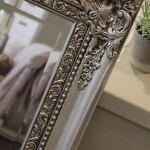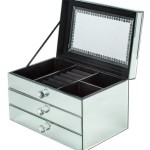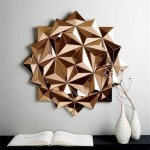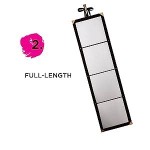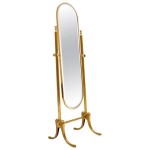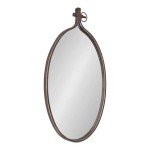Floor to Ceiling Mirror Panels
Floor to ceiling mirror panels offer a dramatic way to transform interior spaces. Their reflective surfaces create an illusion of expanded space, amplify natural light, and introduce a touch of modern elegance. Understanding the different types, installation methods, and design considerations can help homeowners and designers make informed choices.
Types of Floor to Ceiling Mirror Panels
Several options are available depending on the desired aesthetic and budget:
- Standard Glass Mirrors: The most common and cost-effective choice, offering a clear, undistorted reflection.
- Tinted Mirrors: Available in various colors like bronze, gray, or blue, adding a subtle decorative element to the space.
- Antique Mirrors: Characterized by a distressed, aged appearance, adding a vintage or rustic touch.
- Acrylic Mirrors: A lightweight and shatter-resistant alternative to glass, suitable for high-traffic areas or children's rooms.
Installation Methods for Floor to Ceiling Mirrors
Proper installation is crucial for safety and longevity. Common installation methods include:
- J-Channels: Metal or plastic channels used to grip the edges of the mirror panels, providing a clean and secure installation.
- Adhesive: Specialized mirror adhesive can be used to directly bond the panels to the wall, offering a seamless look.
- Z-Clips: Small metal clips that interlock to hold the mirror panels in place, ideal for creating a frameless appearance.
- Mechanical Fasteners: Screws and clips can be used for heavier mirrors or uneven walls, providing extra stability.
Design Considerations for Floor to Ceiling Mirrors
Several design factors influence the effectiveness of floor to ceiling mirrors:
- Location: Strategically placing mirrors opposite windows or light sources maximizes light reflection and creates a brighter space.
- Size and Shape: Large, uninterrupted panels create the greatest impact, while smaller panels can be arranged for a more dynamic effect.
- Framing: Frameless mirrors offer a sleek, contemporary look, while framed mirrors can add a touch of traditional elegance.
- Surrounding Decor: The reflection of surrounding furniture and decor should be considered to avoid a cluttered or disorienting effect.
Benefits of Using Floor to Ceiling Mirror Panels
Incorporating floor to ceiling mirrors provides several advantages:
- Enhanced Spatial Perception: The reflective surfaces create an illusion of depth, making rooms appear larger and more spacious.
- Increased Natural Light: Mirrors effectively bounce natural light deeper into a room, reducing the need for artificial lighting.
- Modern Aesthetic: Floor to ceiling mirrors add a touch of contemporary style and sophistication to any interior.
Maintenance and Care for Mirror Panels
Maintaining the pristine appearance of floor to ceiling mirrors requires proper care:
- Regular Cleaning: Use a glass cleaner and a soft, lint-free cloth to remove fingerprints and smudges.
- Avoid Abrasive Cleaners: Harsh chemicals and abrasive materials can scratch the mirror surface.
- Prevent Moisture Buildup: Ensure adequate ventilation in bathrooms to prevent moisture damage.
Choosing the Right Supplier for Mirror Panels
Selecting a reputable supplier is crucial for obtaining high-quality mirror panels and professional installation:
- Experience and Expertise: Look for suppliers with a proven track record of installing floor to ceiling mirrors.
- Quality Materials: Ensure the supplier uses high-quality glass or acrylic that meets industry standards.
- Warranty and Guarantees: Inquire about warranties on both the materials and the installation service.
Cost Considerations for Floor to Ceiling Mirrors
Several factors contribute to the overall cost of floor to ceiling mirror installations:
- Mirror Type: Standard glass mirrors are typically the most affordable, while specialty mirrors like antique or tinted options are more expensive.
- Size and Dimensions: Larger panels require more material and labor, resulting in higher costs.
- Installation Method: Complex installation methods involving specialized hardware or techniques can increase the overall price.
Safety Precautions for Floor to Ceiling Mirror Installations
Safety should be a primary concern during installation and throughout the lifespan of the mirrors:
- Secure Installation: Ensure the mirrors are securely fastened to the wall to prevent accidental detachment.
- Tempered Glass: Consider using tempered glass, which is more resistant to breakage and shatters into smaller, less hazardous pieces if broken.
- Professional Installation: Hiring experienced professionals for installation minimizes the risk of accidents and ensures proper handling of the heavy panels.

Floor To Ceiling Mirror Design Ideas

Floor To Ceiling Mirrors Transitional Living Room John Jacob Interiors

Antiqued Mirror Wall For A Spacious And Bright Entryway

15 Photogenic Feature Wall Designs That Can Make Your Home Stand Out Design Mirror Decor Living Room Interior

Mirror Wall Panel Ideas To Elevate Your Living Space

Diy Project Removing Floor To Ceiling Mirrors From A Wall In Our House S Dining Room Jeff Geerling

Home Gym Multi Panel Mirrors Design Ideas

10 Rooms With A Mirrored Wall Decoist

How To Use Decorative Mirror Tiles In Interior Design

Oversized Mirrors In Architecture The Illusion Of Larger And Brighter Spaces Archdaily

